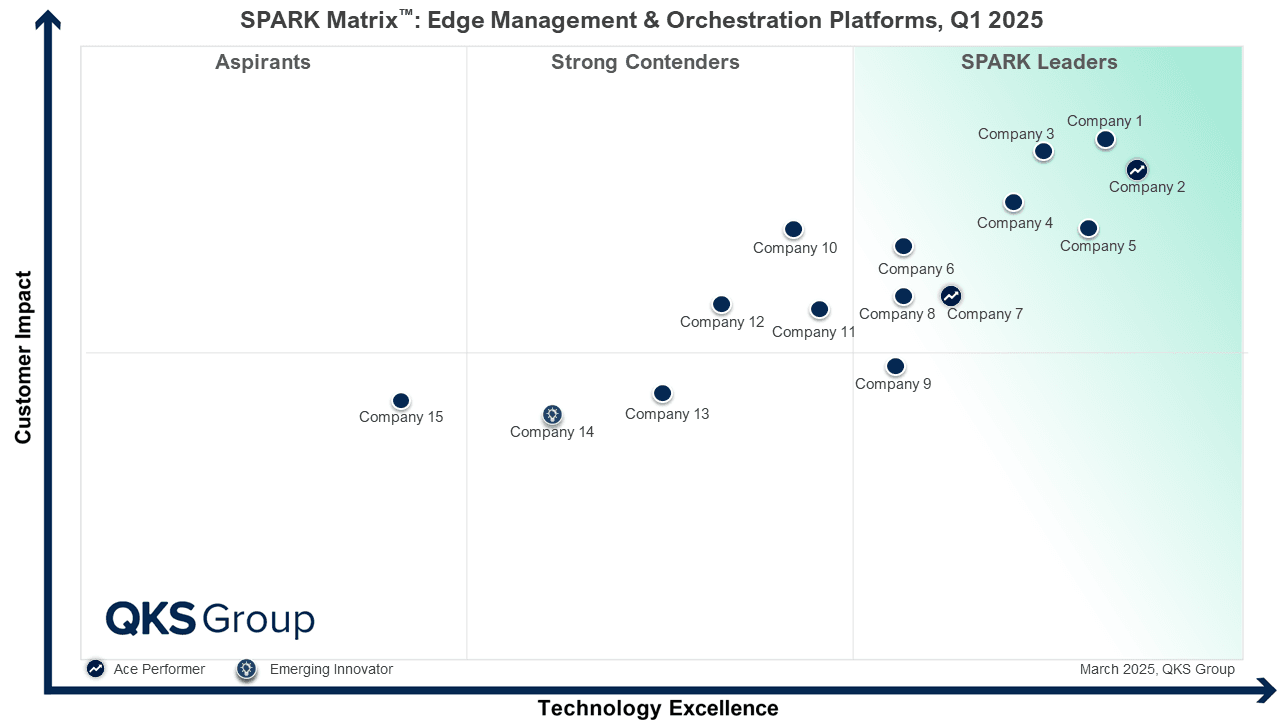SPARK Matrix™:Edge Management and Orchestration: A Complete Guide to EMO Platforms

In the evolving digital ecosystem, Edge Management and Orchestration (EMO) platforms have become the backbone of distributed computing environments. As organizations increasingly adopt edge computing to process data closer to the source, the need for a centralized, intelligent management framework has grown exponentially.
An Edge Management and Orchestration (EMO) platform provides comprehensive oversight, deployment, and coordination of applications, services, and infrastructure operating at the network’s edge. By bridging the gap between cloud and edge environments, EMO platforms empower enterprises to deliver low-latency performance, enhanced scalability, and robust security — all while maintaining centralized control and real-time operational visibility.
What is Edge Management and Orchestration (EMO)?
At its core, an Edge Management and Orchestration (EMO) platform is a unified system designed to manage the complex web of distributed edge environments. It enables organizations to oversee, deploy, and coordinate applications seamlessly across multiple edge locations — from factories and retail stores to telecom towers and IoT ecosystems.
EMO platforms provide real-time insights, ensuring that enterprises can monitor performance, optimize resource utilization, and maintain consistent application delivery across all edge nodes.
Key Features of Edge Management and Orchestration Platforms
Modern EMO platforms combine flexibility, automation, and security to address the growing complexity of edge deployments. Here are the core capabilities that define these platforms:
- Application Deployment and Management
- Automates the rollout, scaling, and updates of applications across distributed edge sites.
- Ensures consistent configuration and performance, regardless of geographic location.
- Manages compute, storage, and networking resources across diverse edge nodes.
- Simplifies resource provisioning and configuration for multi-site environments.
- Supports microservices-based deployments using Kubernetes or similar technologies.
- Facilitates lightweight, scalable, and resilient application architectures at the edge.
- Provides end-to-end protection with authentication, encryption, and threat monitoring.
- Maintains data integrity and compliance across distributed systems.
- Ensures seamless interoperability between edge and cloud environments.
- Enables hybrid management models, allowing data and workloads to move flexibly between environments.
The Edge Orchestration Framework: Core Components
The Edge Orchestration Framework within an EMO platform encompasses several critical operational aspects that make it indispensable to modern enterprises:
- Device Discovery: Automatically identifies new devices and integrates them into the network.
- Resource Provisioning and Configuration: Allocates compute and storage resources dynamically based on workload needs.
- Centralized Monitoring: Provides a unified dashboard for visibility into distributed applications and infrastructure.
- Edge Security: Protects data at rest and in transit with advanced encryption and policy enforcement.
- Application Lifecycle Management: Streamlines deployment, updates, and decommissioning of applications.
- Service Coordination: Ensures consistent communication and synchronization between services running across multiple edge nodes.
Benefits of Edge Management and Orchestration (EMO)
Implementing a robust EMO platform offers organizations multiple strategic advantages:
- Reduced Latency: Brings computation closer to end-users for faster data processing.
- Centralized Control: Simplifies management across thousands of distributed nodes.
- Enhanced Scalability: Easily scale applications and infrastructure as business needs evolve.
- Improved Security: Maintains consistent security policies and governance across environments.
- Operational Efficiency: Reduces manual intervention with automation and real-time orchestration.
By integrating these features, EMO platforms enable enterprises to meet the demands of high-performance, data-intensive applications while maintaining compliance, flexibility, and cost efficiency.
The Growing Importance of EMO in Modern Enterprises
With the proliferation of IoT, 5G, and AI-driven workloads, managing edge environments has become a mission-critical function. Traditional cloud-centric management approaches fall short in addressing the distributed and latency-sensitive nature of edge systems.
Edge Management and Orchestration (EMO) platforms fill this gap by providing a cohesive framework that brings agility, resilience, and intelligence to the edge. Whether it’s enabling predictive maintenance in manufacturing, optimizing content delivery in telecom, or powering smart city applications — EMO platforms serve as the control center of the modern digital edge.
Conclusion
As businesses move toward a decentralized computing model, Edge Management and Orchestration (EMO) platforms have emerged as the enablers of scalability, security, and efficiency at the edge. They integrate orchestration, automation, and analytics to help organizations seamlessly manage distributed infrastructures and applications.
In a world driven by real-time data and dynamic workloads, EMO platforms are not just operational tools — they are strategic assets that empower enterprises to stay agile, resilient, and future-ready in the edge computing era.








